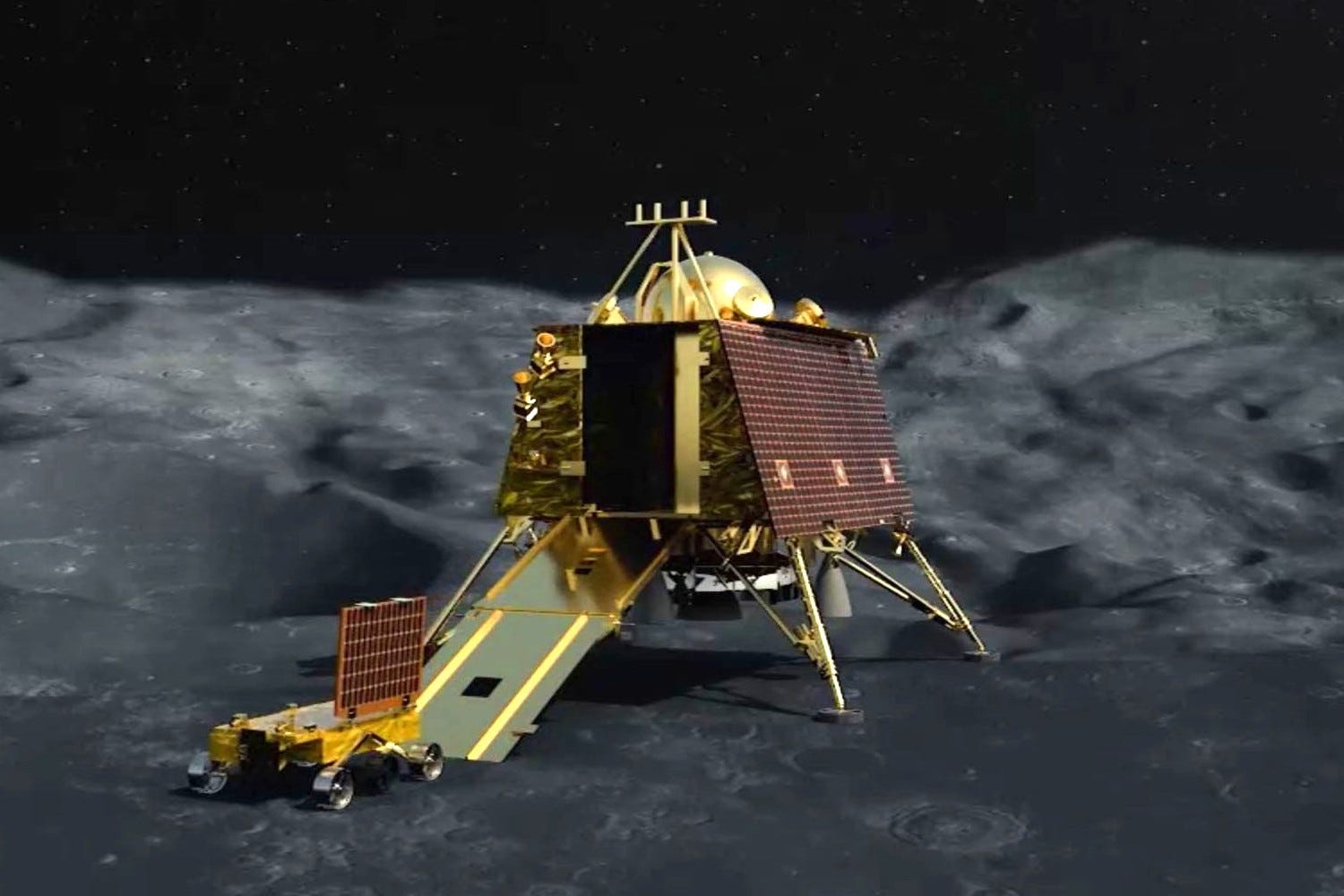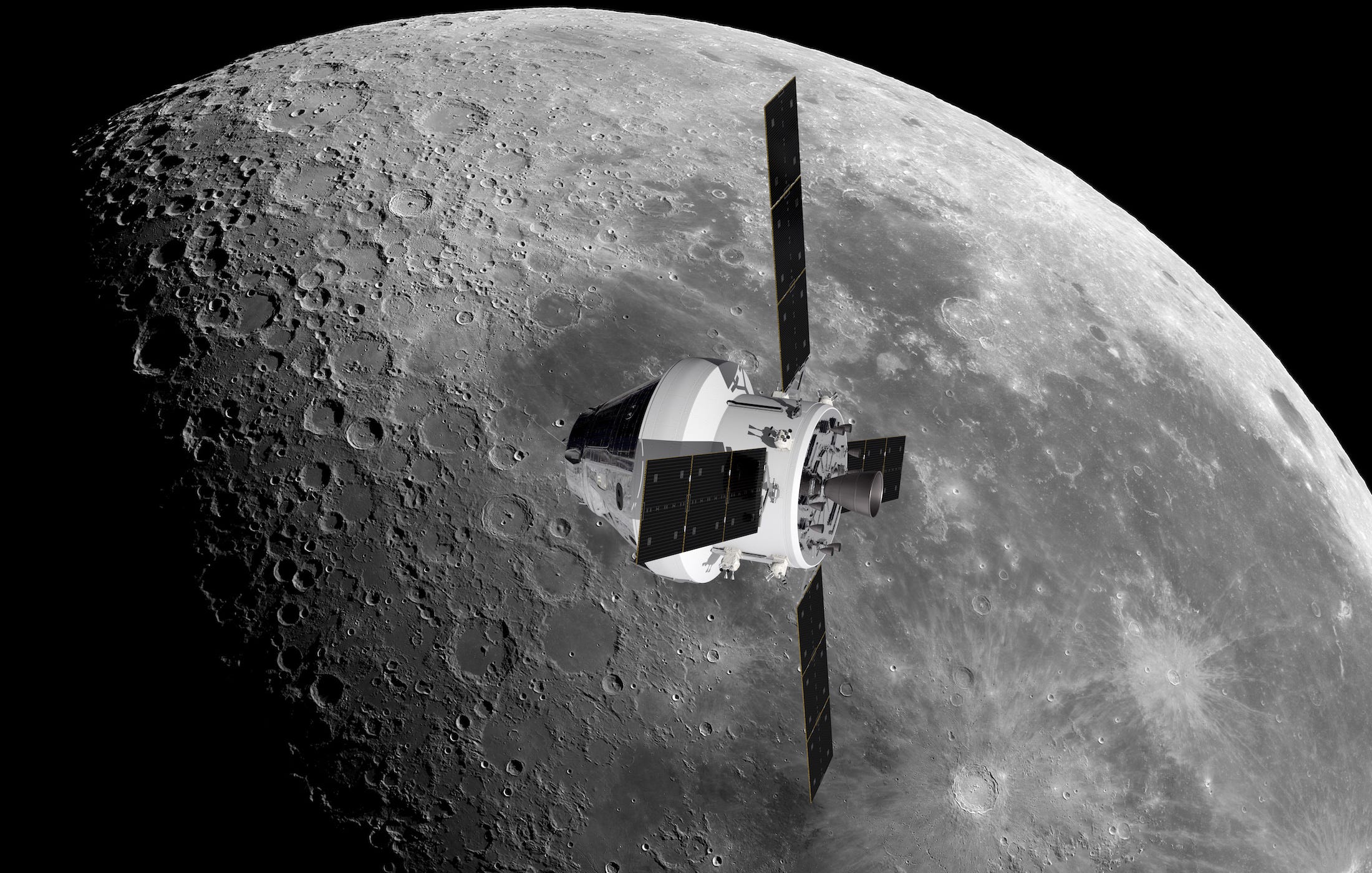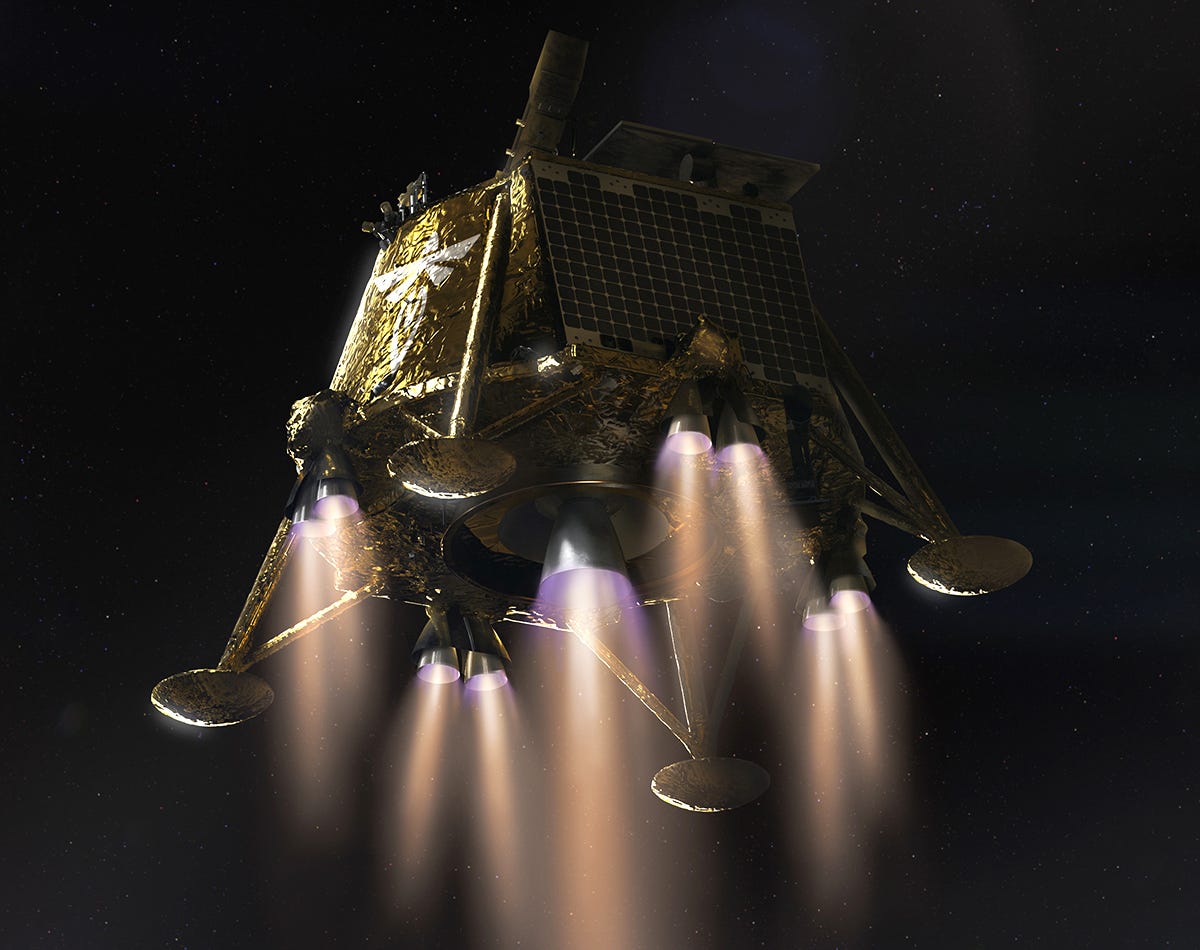Moon Monday #100: Chandrayaan 3 and OneWeb, Orion’s true cost, and more lunar updates
I’ve never been more proud and happy to publish a post on the Internet, for this is the 100th edition of Moon Monday. When I started the newsletter nearly 2 years ago, it didn’t seem there would be enough happening in lunar exploration to reflect on every week but I’m happy to have been so wrong. The archive of global lunar developments across exploration, science, business and policy is filled with hope and push for the future.
I’m also pleased to share with you that Moon Monday crossed 3,000 email subscribers! Gratifyingly, a majority of my readers comprise planetary scientists and engineers, personnel at national space agencies, executives at space companies, and fellow writers & journalists, all from around the world.
Thank you so much to everyone who reads Moon Monday, to those who have provided feedback and shared editions, to ones who donate to directly support my work, and especially to Moon Monday’s sponsors Epsilon3, The Orbital Index and Open Lunar Foundation for helping sustain this newsletter.
If your organization too would like to sponsor this one-of-a-kind newsletter while increasing your visibility among my highly enthusiastic lunatic audience, get in touch.
Here’s to going forward to the Moon. 🚀🌗
Chandrayaan 3 slowed down by one web of perplexing priorities
ISRO has pushed the launch of India’s Chandrayaan 3 Moon landing mission from Q1 2023 to June 2023. After the Chandrayaan 2 lander unfortunately failed to land on the Moon in 2019 during its final mission phase, ISRO has been more serious and cautious than ever prior to attempting a landing again with Chandrayaan 3. While the mission’s technological and scientific objectives haven’t changed, ISRO has made several upgrades to the Chandrayaan-2-like lander such as software improvements, strengthened legs, a couple of new sensors, and better power and communication systems to increase the likelihood of sticking the landing.

Chandrayaan 3’s launch delay, served in the unfortunately characteristic style of ISRO (officials) providing information only when asked, is the latest in a string of similarly conveyed deferrals. Just to sample a few, the mission’s launch per agency officials previously went from Late 2020 to Early 2021 to Early 2022 to Q3 2022 to Early 2023. However, I don’t think the latest delay can be attributed to the mission.
For almost a year now, ISRO officials have consistently projected tests of the lander and other mission aspects to be going well and be done before 2023. Moreover, it was in January that ISRO chief S. Somanath said that the mission’s GSLV Mk III rocket will be ready for launch later in the year—before the mission’s delay to Q1 2023. This brings us to yesterday’s successful launch of OneWeb satellites by the same Mk III.
The next loft of OneWeb satellites to orbit will also be on a Mk III in Q1 2023, which I don’t think just happens to coincide with the previously targeted launch of Chandrayaan 3. Since India can produce a Mk III roughly once every 8 months on average, it appears that the country seized the opportunity to offer OneWeb prioritized rides while meeting the company’s urgent need to replace their now-terminated launch contract with Soyuz.
Sadly, this wasn’t the first time Chandrayaan 3 was deprioritized. In October 2021, The Times of India reported that the mission would be delayed due to ISRO prioritizing their Gaganyaan preparations to send humans to Earth orbit. If only that was Gaganyaan’s only snatch. India’s upcoming Venus orbiter Shukrayaan has been unable to secure a GSLV Mk III for launch because the vehicle will be busy serving human spaceflight missions mid-decade. Shukrayaan mission designers are thus now looking into choosing the Mk II launch vehicle, which other than delays could reduce the orbiter’s capabilities because the Mk III is India’s most powerful rocket.
Jeff Foust reports that India is working on increasing the Mk III’s production rate to an average of one every 3 months within 2–3 years so as to attract more commercial customers, and that these would be separate from the modified Mk IIIs produced for the crewed Gaganyaan program. While this could’ve been great news for India’s growing planetary ambitions, the increased availability of launch vehicles unfortunately seems to be restricted to commercial launches.
Don’t get me wrong, I’m excited about India’s growing commercial space launches going ahead—especially as a somewhat geopolitically neutral offering—but for a nation that prides itself on its purported space science achievements, India ought to be just as confident and intentional about its planetary goals and plans. While space enthusiasts around the world cheered yesterday’s OneWeb launch, as they will for Gaganyaan, none of it needs to come at the cost of uniquely valuable space science.
Update on Oct 31, 2022: It’s now confirmed that ISRO really did delay Chandrayaan 3’s launch for OneWeb.
NASA contracts Lockheed Martin to make 3 more Orion lunar capsules

As part of NASA’s Artemis campaign to regularly send humans to the Moon, the agency has awarded Lockheed Martin a $1.99 billion contract to produce 3 more crewed Orion capsules that would fly on Artemis VI–VIII missions. This leaves 6 more capsules that NASA can order for future missions per the original 2019 agreement. For comparison, NASA procured the Artemis III–V capsules at $2.7 billion. The cost savings chiefly come from future reusing of many components and parts of the spacecraft structure from returned capsules during initial Artemis missions. While both entities highlighted the same, it’s important to put that in context.
In its November 2021 report, NASA’s Office of Inspector General (OIG) highlighted that a single Orion capsule launch for Artemis I and II would cost a whopping $1 billion. This doesn’t include the $300 million of the European Service Module, which critically provides propulsion, water, oxygen, thermal control, and electrical power to Orion. The figure also doesn’t include the $20 billion already spent on development costs. To make matters worse, the OIG issued a highly critical report in 2020 on how NASA (mis)accounts for Orion costs. So while the roughly $667 million per Orion capsule for Artemis VI–VIII sounds like a good cost reduction, and is welcome, it’s not as effective in the grand scheme of things.
More Moon
NASA has extended the deadline from November 15 to December 6 for U.S. companies to submit their “sustainable” lander proposals to bid against SpaceX’s Lunar Starship on all future crewed Artemis landings post Artemis V. The selection will now be in June 2023 instead of May.
Relatedly, Marcia Smith reports that former Space Shuttle Flight Director Wayne Hale, who now chairs the Human Exploration and Operations Committee of the NASA Advisory Council, is urging the agency to avoid contracts that prevent release of public information because companies claim proprietary rights. This applies particularly to the Public-Private crewed lunar landers mentioned above.
Jeff Foust reports that ESA will seek €380 million for its robotic lunar exploration plans at the upcoming Ministerial Council in November 2022, a meeting of government ministers from each of ESA’s 22 Member States. The majority of the requested funds are to begin development on the ambitious and versatile European Large Logistics Lander, followed presumably by ESA’s Moonlight plans to build a constellation of satellites that provide communications and navigation services for hardware at and around the Moon.
Former NASA administrator James Bridenstine, who helped NASA launch the crewed Artemis lunar campaign and the CLPS robotic Moon landing program, has joined Firefly Aerospace’s Advisory Board. Firefly is gearing up for its first CLPS mission in 2024, carrying 155 kilograms of NASA payloads to the lunar surface. I’ve covered the mission’s landing site and science in Moon Monday #70.
Only 2% of the named craters on the Moon are designated after women, a fact made worse when considering the historical role of women in naming them. A publicly signable open letter urges the International Astronomical Union to modify its planetary naming conventions to ensure better representation for all because even well-intentioned recent efforts aren’t able to avoid biased outcomes.
James McDivitt passed away on October 13. He commanded the Apollo 9 mission, and was the lunar landing operations manager for Apollo missions 12 through 16.
The time NASA figured out that our Moon is cratered all the way down

Which is your favorite Moon Monday edition? I’d be curious for you to let me know. Some of mine are #95, #87, #79, #70, #52, #39, #26 and, of course, #1. 🌝
→ Browse the Blog | About | Donate ♡
